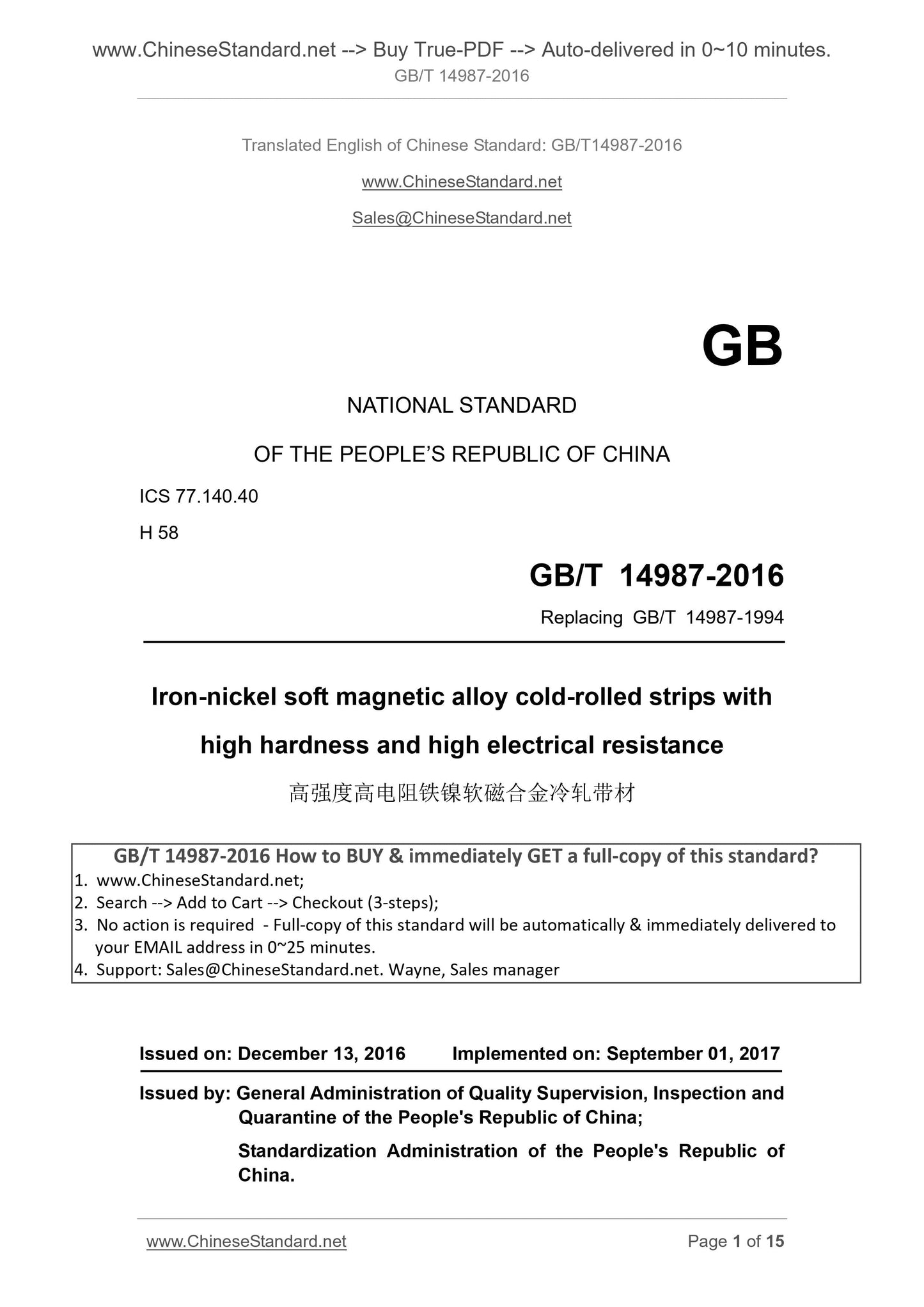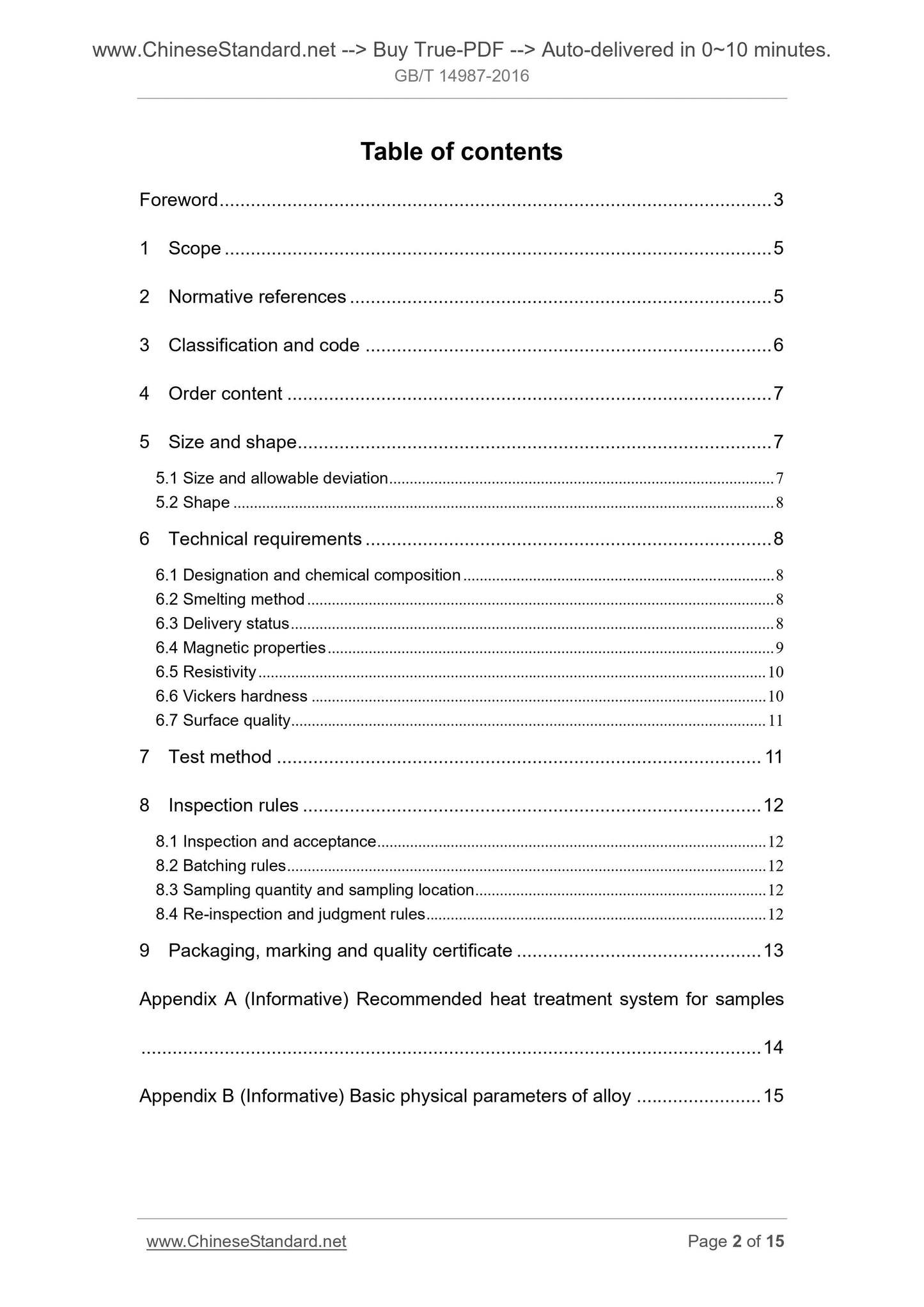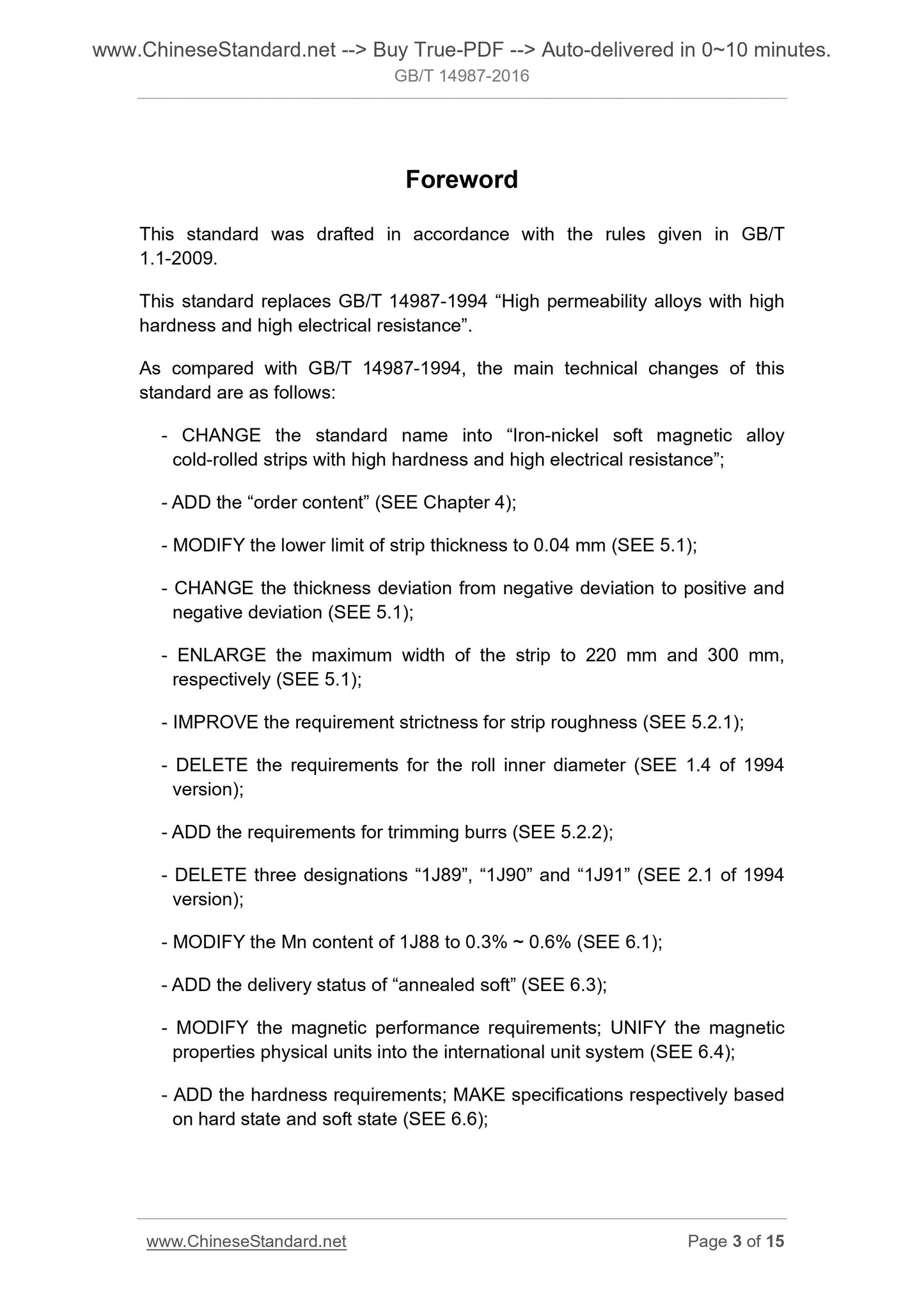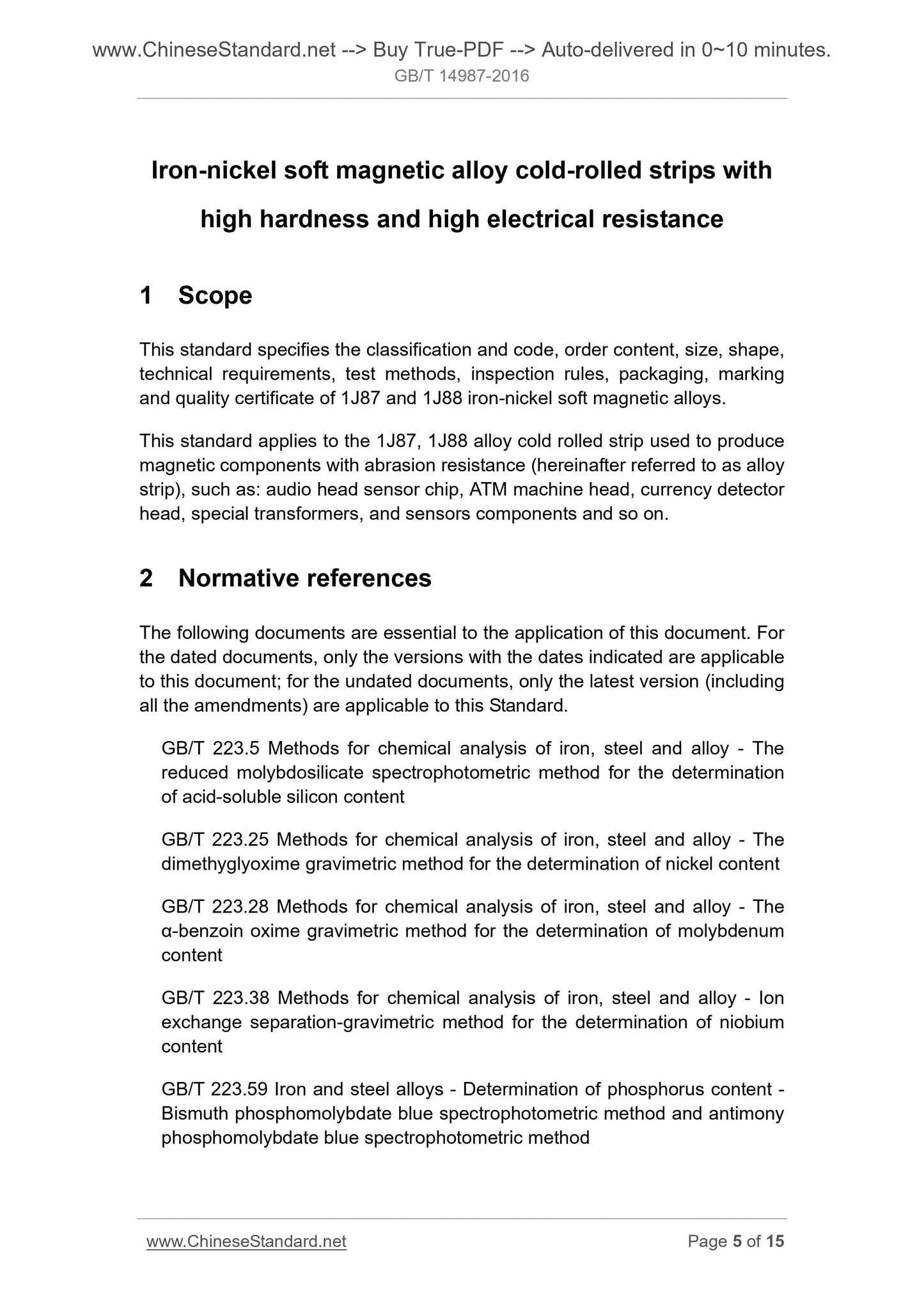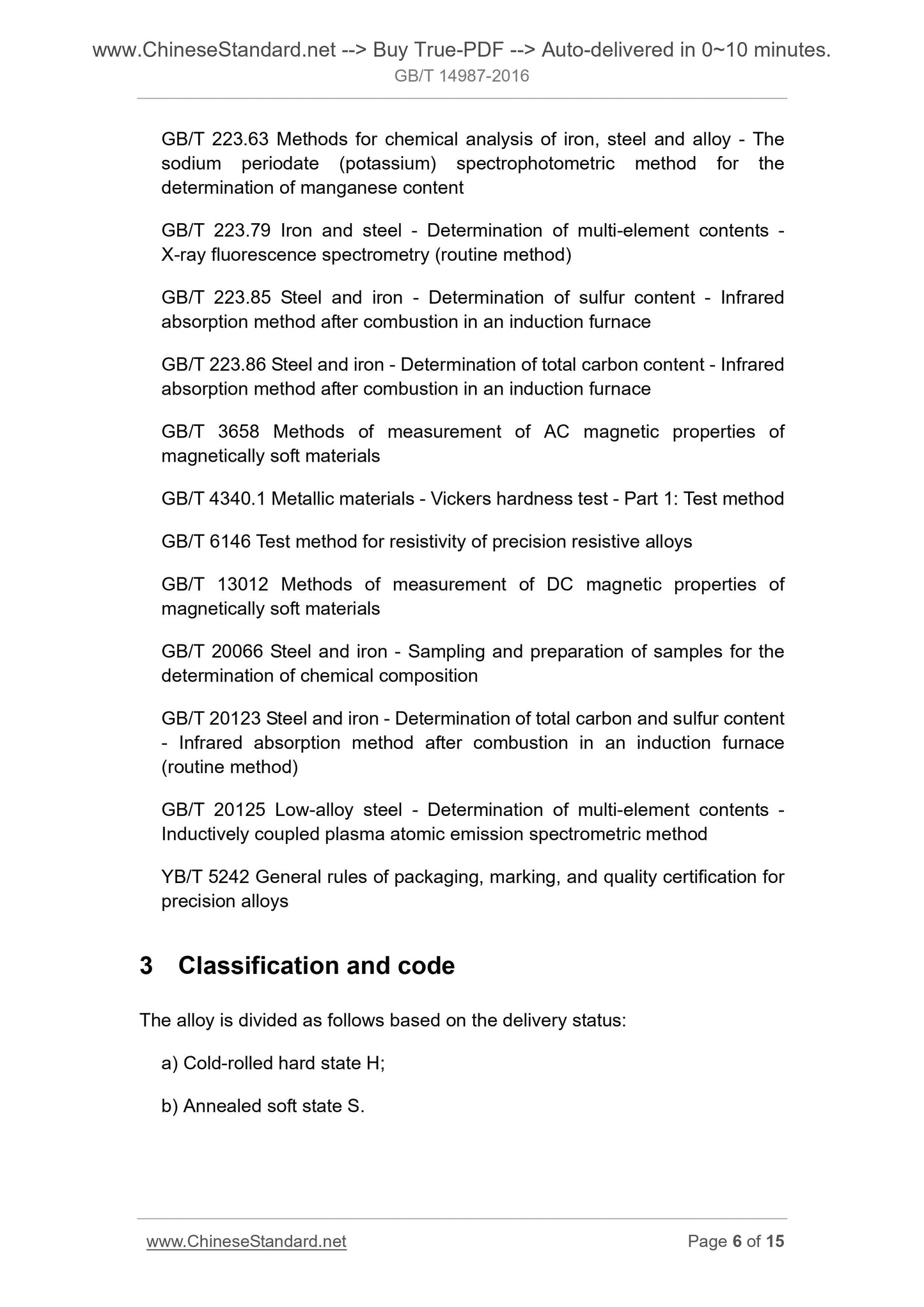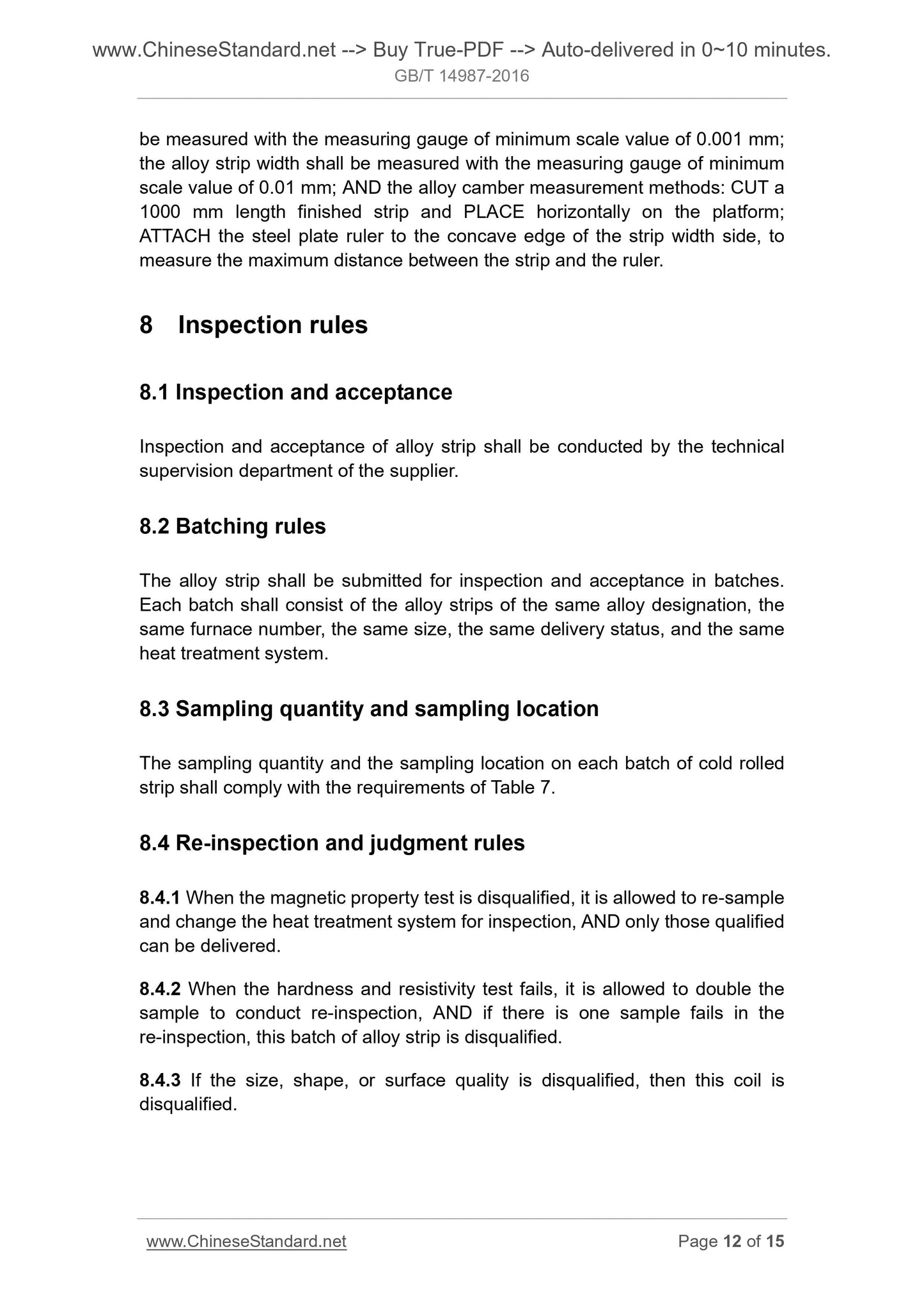1
/
of
6
www.ChineseStandard.us -- Field Test Asia Pte. Ltd.
GB/T 14987-2016 English PDF (GB/T14987-2016)
GB/T 14987-2016 English PDF (GB/T14987-2016)
Regular price
$130.00
Regular price
Sale price
$130.00
Unit price
/
per
Shipping calculated at checkout.
Couldn't load pickup availability
GB/T 14987-2016: Iron-nickel soft magnetic alloy cold-rolled strips with high hardness and high electrical resistance
Delivery: 9 seconds. Download (and Email) true-PDF + Invoice.Get Quotation: Click GB/T 14987-2016 (Self-service in 1-minute)
Newer / historical versions: GB/T 14987-2016
Preview True-PDF
Scope
This standard specifies the classification and code, order content, size, shape,technical requirements, test methods, inspection rules, packaging, marking
and quality certificate of 1J87 and 1J88 iron-nickel soft magnetic alloys.
This standard applies to the 1J87, 1J88 alloy cold rolled strip used to produce
magnetic components with abrasion resistance (hereinafter referred to as alloy
strip), such as. audio head sensor chip, ATM machine head, currency detector
head, special transformers, and sensors components and so on.
Basic Data
| Standard ID | GB/T 14987-2016 (GB/T14987-2016) |
| Description (Translated English) | Iron-nickel soft magnetic alloy cold-rolled strips with high hardness and high electrical resistance |
| Sector / Industry | National Standard (Recommended) |
| Classification of Chinese Standard | H58 |
| Classification of International Standard | 77.140.40 |
| Word Count Estimation | 14,144 |
| Date of Issue | 2016-12-13 |
| Date of Implementation | 2017-09-01 |
| Older Standard (superseded by this standard) | GB/T 14987-1994 |
| Regulation (derived from) | National Standard Notice No.9016 of 2016 |
| Issuing agency(ies) | General Administration of Quality Supervision, Inspection and Quarantine of the People's Republic of China, Standardization Administration of the People's Republic of China |
Share
